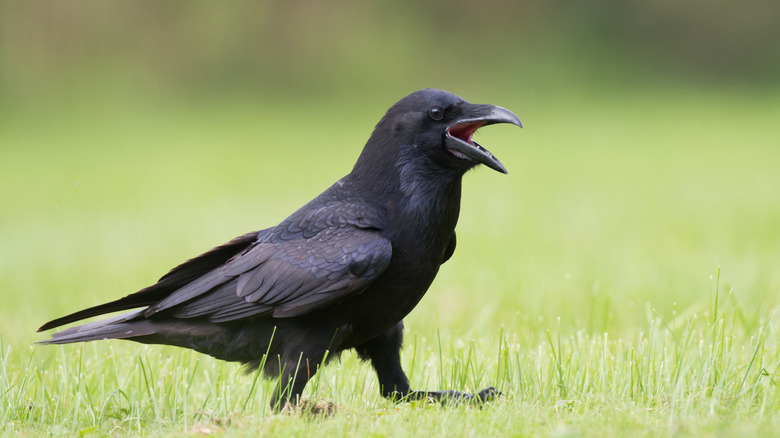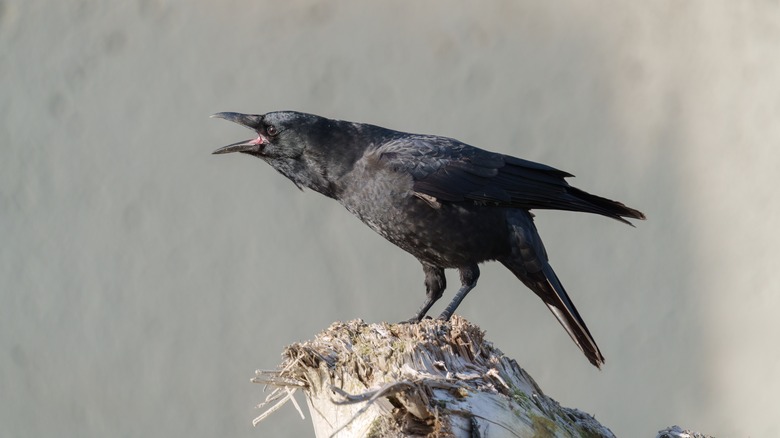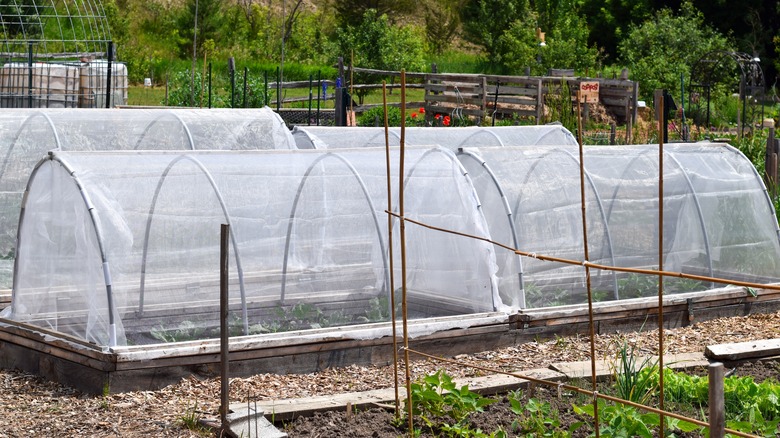Raven Vs Crow: Key Tips To Tell Them Apart (And Why You Want Them Around)
The elegant and intelligent birds in the Corvus genus have finally been getting the appreciation they deserve lately, with recent studies not just shedding light on crow and raven tool usage but also hypothesizing that they may even be as smart as many great apes. There's a good chance that at least one species of these brilliant birds lives in your neighborhood and can be encouraged to visit your yard. By looking carefully at your new bird friend's feathers and size and listening to their calls, you'll be able to tell if they are a raven or crow and entice them to visit your yard regularly.
While ravens and crows look similar at first glance, with both boasting shiny black feathers, ravens (Corvus corax) are generally much larger with shaggier feathers that are especially noticeable on their chests. Unlike crows, whose call is generally described as "caw-caw," ravens have a lower and more croaking call. Ravens are also less likely to be spotted in a group than crows, preferring to be solitary or with just their mate. Regardless of whether your local birds are crows, ravens, or both, you can attract them to your yard to help control small rodents, insects, and other pests. They also eat roadkill and other dead animals, helping to keep your space free of decay.
Benefits of attracting crows and ravens to your yard
While crows and ravens have been known to damage crops like corn, grains, and fruits, that doesn't necessarily mean you don't want them around. Because crows and ravens are omnivores, they will eat everything from insects and small mammals to carrion. Their ability to deal with pests likely more than makes up for any damage they do to your crops. Even a crow that is ripping up your front lawn may just be letting you know that your yard is infested with tasty grubs. In addition to the practical advantages of encouraging crows to visit, crows have been known to leave charming gifts of shiny objects for those who feed and befriend them.
You can easily attract crows and ravens to your yard with treats, including bird feeders full of cracked corn or other seeds and nuts. Plants like berry bushes and sunflowers can also attract crows to your yard or garden. A good water source is also important for birds in your yard, and whether you choose to DIY a birdbath for your yard or install a wildlife pond, your corvid friends are sure to appreciate it.
Preventing damage from crows and ravens
While crows and ravens are amazing birds, often becoming more like helpers than pests, they can still cause damage. The best way to prevent corvids and other birds from eating any especially beloved crops is to simply make those plants inaccessible to them. Netting can be used to keep birds out of your garden and away from any particularly vulnerable plants.
By excluding crows, ravens, and other birds from a few sections of your garden, you'll be able to enjoy the benefits of having these intelligent and fascinating predators around while still protecting your crops. Harassment, traps, and other methods are also sometimes used to keep corvids out of gardens and away from crops, but crows have an impressive memory for faces and can remember people who have scared them, so if you hope to develop a friendship with your local corvids, it's best to use gentle methods when protecting the rest of your garden.


